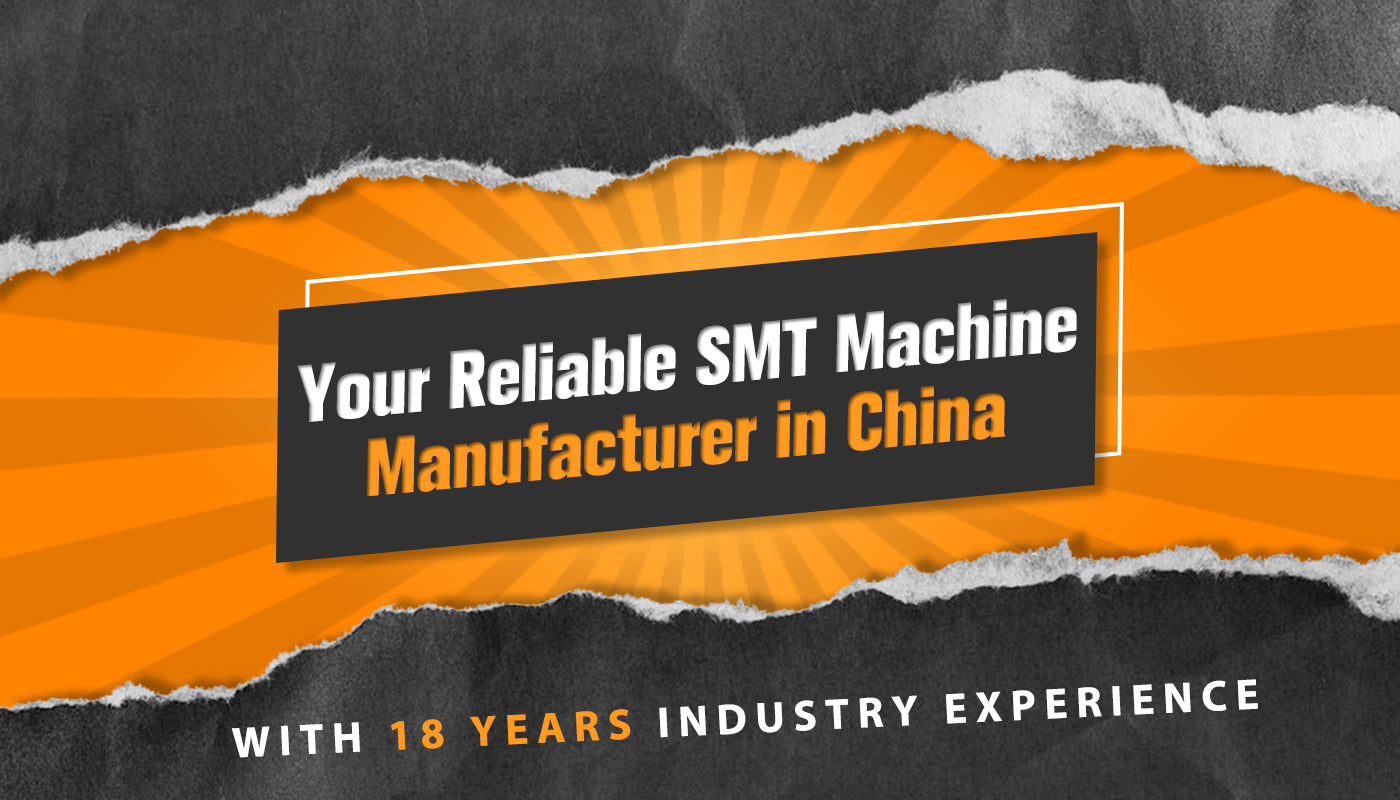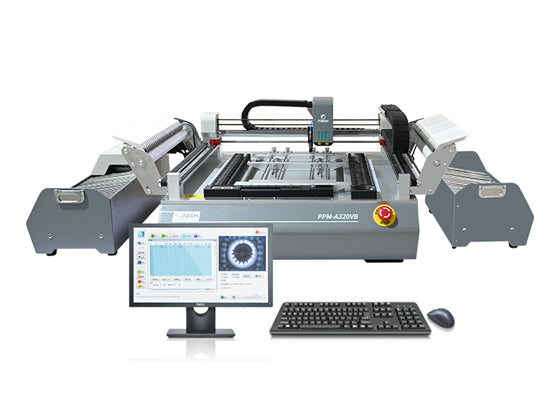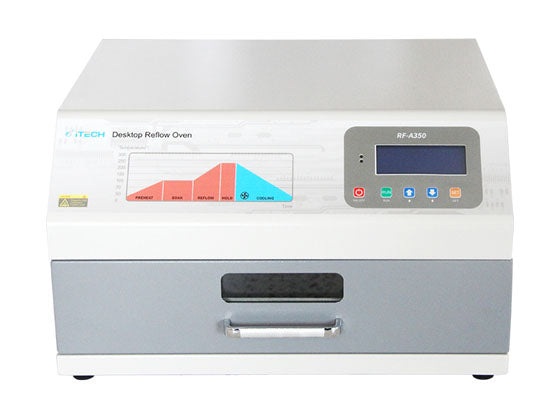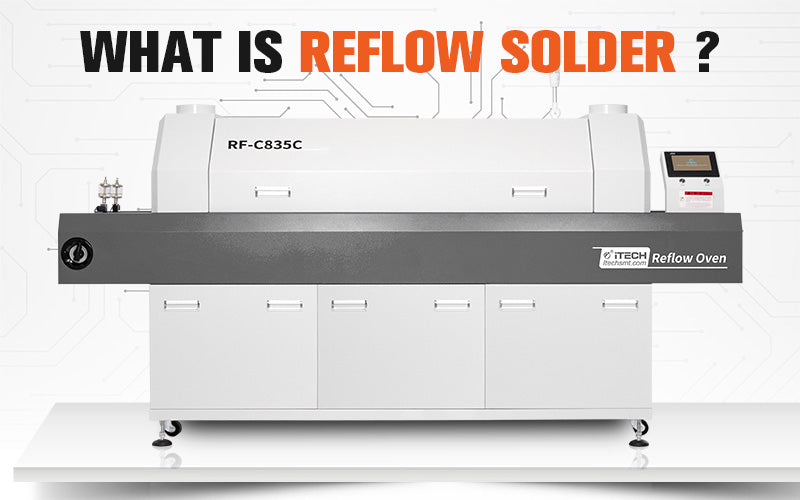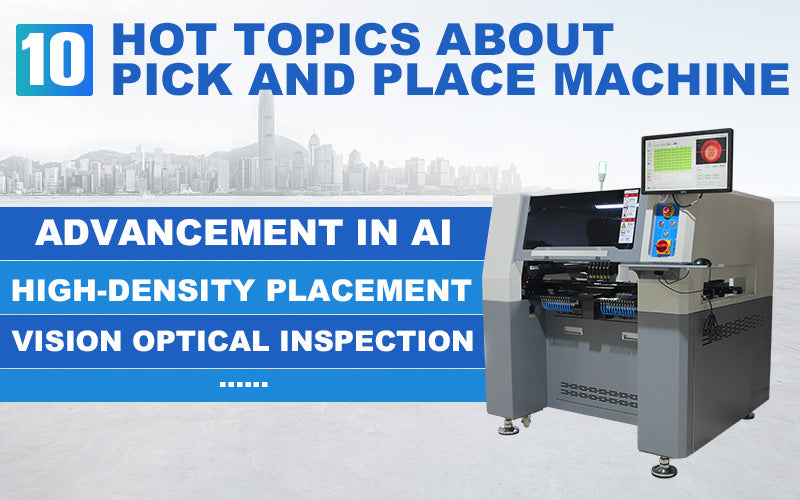A pick and place machine plays a critical role in the assembly of printed circuit boards (PCBs) in surface mount technology (SMT) processes. It automates the precise placement of electronic components onto the PCBs. Here are some key aspects of pick and place machines for PCB assembly:
Component Handling: PCB Pick and place machines are designed to handle a wide range of electronic components, including resistors, capacitors, integrated circuits (ICs), connectors, LEDs, and more. They can accommodate different component sizes, packages, and formats.
Feeding Systems: Pick and place machines utilize various feeding systems to supply components for placement. These systems include tape feeders, tray feeders, tube feeders, and bulk feeders. Each feeder type is suitable for specific component types and quantities.
Vision Systems: Vision systems are integral to pick and place machines. They provide visual recognition and alignment of components and PCBs. Vision systems use cameras, image processing algorithms, and pattern recognition techniques to locate fiducial marks or reference points on the PCB and components for accurate placement.
Component Orientation: Pick and place machines can handle components with different orientations, such as 0°, 90°, 180°, and 270° rotations. The machines automatically adjust the component orientation during the pickup and placement process to align it correctly with the PCB pads.
Nozzle Types: SMD Pick and place machines employ various nozzle types to pick up and place components. These include vacuum nozzles, gripper nozzles, and specialized nozzles for delicate or odd-shaped components. Nozzle selection depends on the component size, weight, fragility, and handling requirements.
Accuracy and Precision: Pick-and-place machines offer high levels of accuracy and precision, typically in the range of microns. They ensure precise alignment and placement of components onto the PCB pads, enabling reliable soldering and electrical connections.
Software Control: Pick & place machines are controlled by software programs that define component placement locations, speeds, feed rates, and other parameters. The software allows for programming and optimization of the assembly process, including machine setup, production planning, and error correction.
Throughput and Speed: Pick and place machines are designed for high-speed operation to meet the demands of modern electronics manufacturing. They can achieve placement rates ranging from a few thousand to tens of thousands of components per hour, depending on the machine's capabilities and complexity.
Compatibility and Integration: Pick and place machines are typically compatible with industry-standard file formats, such as Gerber files and bill of materials (BOM), for seamless integration into the PCB assembly process. They can be integrated with other machines, such as solder paste printers, solder reflow ovens, and automated inspection systems, to form a complete SMT assembly line.
Flexibility: Pick and place machines offer flexibility to accommodate different PCB designs, component types, and production requirements. They can handle single-sided or double-sided PCBs, high-mix, and low-volume production, as well as support rapid changeovers between different product runs.
Overall, pick and place machines are essential tools in PCB assembly, enabling efficient, accurate, and high-speed placement of electronic components. Their automation capabilities significantly enhance productivity and reliability in electronics manufacturing.
Component Handling: PCB Pick and place machines are designed to handle a wide range of electronic components, including resistors, capacitors, integrated circuits (ICs), connectors, LEDs, and more. They can accommodate different component sizes, packages, and formats.
Feeding Systems: Pick and place machines utilize various feeding systems to supply components for placement. These systems include tape feeders, tray feeders, tube feeders, and bulk feeders. Each feeder type is suitable for specific component types and quantities.
Vision Systems: Vision systems are integral to pick and place machines. They provide visual recognition and alignment of components and PCBs. Vision systems use cameras, image processing algorithms, and pattern recognition techniques to locate fiducial marks or reference points on the PCB and components for accurate placement.
Component Orientation: Pick and place machines can handle components with different orientations, such as 0°, 90°, 180°, and 270° rotations. The machines automatically adjust the component orientation during the pickup and placement process to align it correctly with the PCB pads.
Nozzle Types: SMD Pick and place machines employ various nozzle types to pick up and place components. These include vacuum nozzles, gripper nozzles, and specialized nozzles for delicate or odd-shaped components. Nozzle selection depends on the component size, weight, fragility, and handling requirements.
Accuracy and Precision: Pick-and-place machines offer high levels of accuracy and precision, typically in the range of microns. They ensure precise alignment and placement of components onto the PCB pads, enabling reliable soldering and electrical connections.
Software Control: Pick & place machines are controlled by software programs that define component placement locations, speeds, feed rates, and other parameters. The software allows for programming and optimization of the assembly process, including machine setup, production planning, and error correction.
Throughput and Speed: Pick and place machines are designed for high-speed operation to meet the demands of modern electronics manufacturing. They can achieve placement rates ranging from a few thousand to tens of thousands of components per hour, depending on the machine's capabilities and complexity.
Compatibility and Integration: Pick and place machines are typically compatible with industry-standard file formats, such as Gerber files and bill of materials (BOM), for seamless integration into the PCB assembly process. They can be integrated with other machines, such as solder paste printers, solder reflow ovens, and automated inspection systems, to form a complete SMT assembly line.
Flexibility: Pick and place machines offer flexibility to accommodate different PCB designs, component types, and production requirements. They can handle single-sided or double-sided PCBs, high-mix, and low-volume production, as well as support rapid changeovers between different product runs.
Overall, pick and place machines are essential tools in PCB assembly, enabling efficient, accurate, and high-speed placement of electronic components. Their automation capabilities significantly enhance productivity and reliability in electronics manufacturing.
